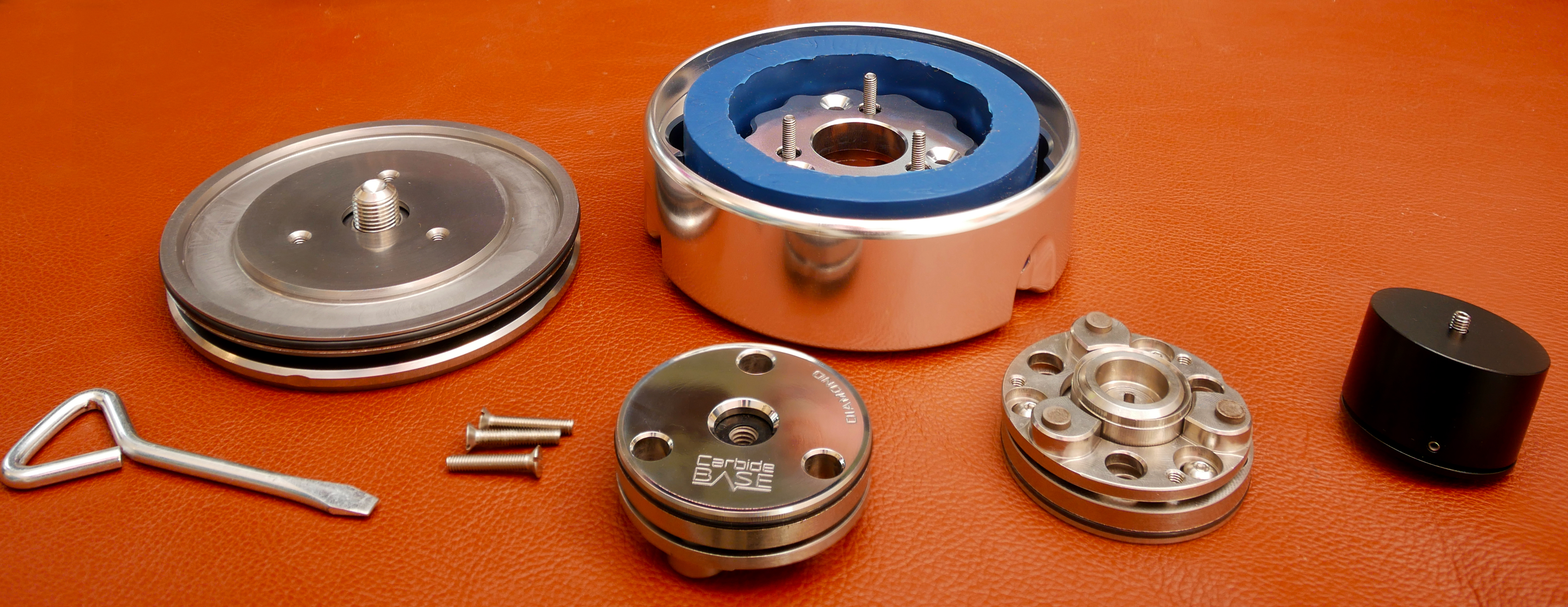
Country of Origin

Reviewer: Srajan Ebaen
Financial interests: click here
Main system: Sources: Retina 5K 27" iMac (i5, 256GB SSD, 40GB RAM, Sonoma 14), 4TB external SSD with Thunderbolt 3, Audirvana Studio, Qobuz Sublime, Singxer SU-6 USB bridge, LHY Audio SW-8 & SW-6 switch, Cen.Grand DSDAC 1.0 Deluxe; Active filter: Lifesaver Audio Gradient Box 2; Power amplifiers: Kinki Studio EX-B7 monos & EX-M7 on subwoofer; Headamp: Cen.Grand Silver Fox; Phones: HifiMan Susvara, Meze 109 Pro; Loudspeakers: Qualio IQ [on loan] Cables: Kinki Studio Earth, Furutech; Power delivery: Vibex Granada/Alhambra on all source components, Vibex One 11R on amps, Furutech DPS-4.1 between wall and conditioners; Equipment rack: Artesanía Audio Exoteryc double-wide 3-tier with optional glass shelves, Exoteryc amp stands; Sundry accessories: Acoustic System resonators, LessLoss Firewall for loudspeakers, Furutech NCF Signal Boosters; Room: 6 x 8m with open door behind listening seat
2nd system: Source: FiiO R7 into Soundaware D300Ref SD transport to Sonnet Pasithea; Preamp/filter: Lifesaver Audio Gradient Box 2; Amplifiers: Gold Note PA-10 Evo monos; Loudspeakers: MonAcoustic SuperMon Mini or Acelec Model One + Dynaudio S18 sub; Power delivery: Furutech GTO 2D NCF, Akiko Audio Corelli; Equipment rack: Hifistay Mythology Transform X-Frame [on extended loan]; Sundry accessories: Audioquest Fog Lifters; Furutech NFC Clear Lines; Room: ~3.5 x 8m
Desktop system: Source: HP Z230 work station Win10/64; USB bridge: Singxer SU-2; DAC: iFi Pro iDSD Signature; Clock: LHY Audio OCK-2; Head/speaker amp: Enleum AMP-23R; Speakers: EnigmAcoustics Mythology M1; Headphones: Final D-8000 & Sonorous X, Audeze LCD-XC, Raal-Requisite SR1a
Upstairs headfi system: FiiO R7; Headphones: Meze 109 Pro
2-channel video system: Source: Oppo BDP-105; All-in-One: Gold Note IS-1000 Deluxe; Loudspeakers: Zu Soul VI; Subwoofer: Zu Submission; Power delivery: Furutech eTP-8, Room: ~6x4m
Review component retail: from $199/3 to $475/1 – full details on bottom of page 3
 On the far right we see the two halves of the Diamond insert with its diamond-skin ceramic races and extra-hard zirconium ball bearings.
On the far right we see the two halves of the Diamond insert with its diamond-skin ceramic races and extra-hard zirconium ball bearings.
Diamonds are a sound grafter's best friend. Last August I'd learnt how with Jeffrey Jenkins' Base Diamond isolation footer. After trying a quad with two subwoofers, I used just two each turned upside down to go beneath my compact Sonnet Pasithea DAC and Lifesaver Audio Gradient Box II active xover. Given what for lightweight compact kit is the Base's colossal size, I'd suggested that with minor modifications, the Diamond insert as standalone isolator might make a swell new product? This notion grew legs; two as it turns out.

First a small recap. My photo has the gist. Though the lower roller-ball isolation layer of the partially disassembled Base Diamond remains hidden, you do see its blue viscoelastic damper for vertical decoupling; and extracted, the Diamond insert top and bottom. The single black footer from my Enleum AMP-23R is there for size reference only. What I thought forthcoming to sail solo was a version of the foreground puck. That's all I expected whilst the Llano workshop elves were busy refining the design. Carrying over would obviously be the ceramic races with vapor-deposited synthetic diamond layer and large zirconia bearings. Their extra hardness better resists deformation under load. Perfect geometry maintains lower friction for any such footer's horizontal displacement MO. It mirrors R&D at the Danish Ansuz HQ. Their Darkz roller-ball isolators too exploit exotic ever harder nano skins for more effective decoupling. A decisive difference is that Carbide's €599 best goes straight for diamond as the hardest possible material yet charges significantly less than Ansuz's top €3'500 part because only its races not the entire body undergo hardening treatment. By promising to drop the original Base's outer body, the 'Diamond Mini'—an official name hadn't been announced yet—wouldn't just shrink the big Diamond's size but price. In my book of demonstrably effective hifi accessories, that was an exciting prospect I signed up for early.
Then reality intruded with "we actually have two new models, Carbide Base Micro and Carbide Base Nano. Micro will release first. It's a significantly smaller less expensive Carbide Base which can optionally accept the Diamond insert you have in your quad. Nano will be the "diamond-only" smallest version. I'll still explain in more detail why I decided to have two separate models based on measurements and testing over the last few months. Bottom line, there are only pretty specific scenarios where Nano will work best. Both footers should be pretty awesome though. If you decide that there's one you prefer to review over the other, that's fine."
The render shows what enabled the shrinkage. The weight-rated ViscoRing's dimensions have always set its vertical isolation effectiveness with a very low resonant frequency. Different compositions of the replaceable elastic material support multiple weight ratings up to fully loaded metal racks. The Micro splits this out into three smaller cylinders of necessarily higher resonant frequency. The concealed lower ball-bearing layer remains. So does a height-adjustable lower plate. Ball bearing diameters increase, the outer detailing of the barrel body changes. It's a clever adaptation of the original design to answer what must have been sufficient calls for a smaller form factor. Nano omits all viscoelastics and is down to a single ball bearing to shrink still further.
